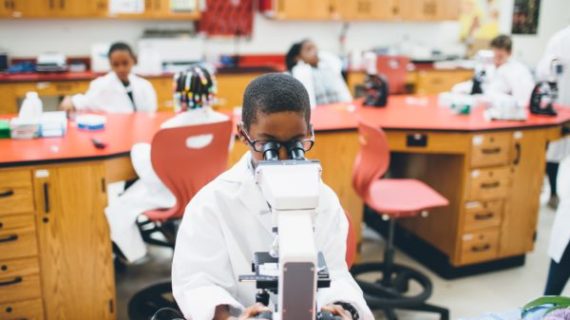Thanks to a My Voice communication device, this young girl has a ‘bright future’
Mia Young was an adorable baby. But her parents, both teachers in Huntingdon, PA, near Altoona, realized early on that she wasn’t talking like most kids. By the time she was a toddler, Mia’s frustration in communicating turned into tantrums.
Her mom, Anita Young, describes what it was like: “There were times I can remember how she threw herself on the floor, would scream, would scoot herself to the edge of the wall, to the edge of the molding, and she would hit her head off there, and you felt hopeless.”
Mia’s dad, Matt Young, added this: “That was the scariest. You had no idea. I mean, was she ever going to talk to her brother? We had all these questions that were there all the time.”
When she turned 3, Mia was diagnosed with autism and began to use a communication device in her therapy.
In this therapy, a child touches the picture or word on an iPad, and the device says the word out loud — things like “hungry” or “I need help.” Anita and Matt were initially skeptical about using it at home. But once Mia got her device through the My Voice program from Variety-the Children’s Charity when she turned 4, she soon started mimicking the sounds made by the device.
“Brown Bear,” Mia says while reading the Eric Carle book in a video her mom took when she was 4. A year and a half later, Mia was mostly speaking on her own. She’s 7 now and loves to read.
“When I go to the beach, I put on something shiny to protect my eyes,” she read from a Daniel Tiger book.
I recently asked Mia over Zoom: “Do you even need to use the device to say what you need?”
“Not really,” Mia replied.
“It gives you an opportunity to see who your child really is – the humor about them, the silliness, and those are memories as a family you make,” Anita told me, “and I think that’s what is impactful.”
“Our pizza’s almost really done,” Mia says while making dinner with her mom, dad, and brother, Lincoln. Mia’s relationships with her family and friends have blossomed now that she can communicate, and she loves to use her words to make people happy.
“I love you. Give a kiss and a hug,” she says to her mom while squeezing her.
“Thank you,” her mom said. “You can say that now.”
The Youngs are on a mission to advocate for all kids who could use a My Voice device to have one at home.
“Who are we to limit when our children can and can’t have voices? Who are we to say, ‘You’re allowed to have a voice at school, but you’re not allowed to have a voice at home?,'” asks Charlie LaVallee, CEO of Variety the Children’s Charity, who is working to expand the My Voice program from just Pennsylvania and West Virginia to nationwide.
He says Variety’s public-private partnership is a model that can be replicated everywhere.
“We have to keep focusing on what’s our goal which is really for the kids to be able to live life to the fullest, and you need to have a voice, some way or another, whether it’s a device or your own voice, so you can participate,” LaVallee said.
Matt Young agrees: “Now, there’s hope,” he says. “We think she has a bright future, and we’re excited to be a part of it.”
If you know a child who may be able to use a device, visit Variety’s website here and read this story for more information about My Voice. The income qualifications include middle-class families, too.
Variety is hoping Pennsylvania will continue to provide public money for the devices next year and that they can show other states how to replicate the model so that all kids have a voice.










